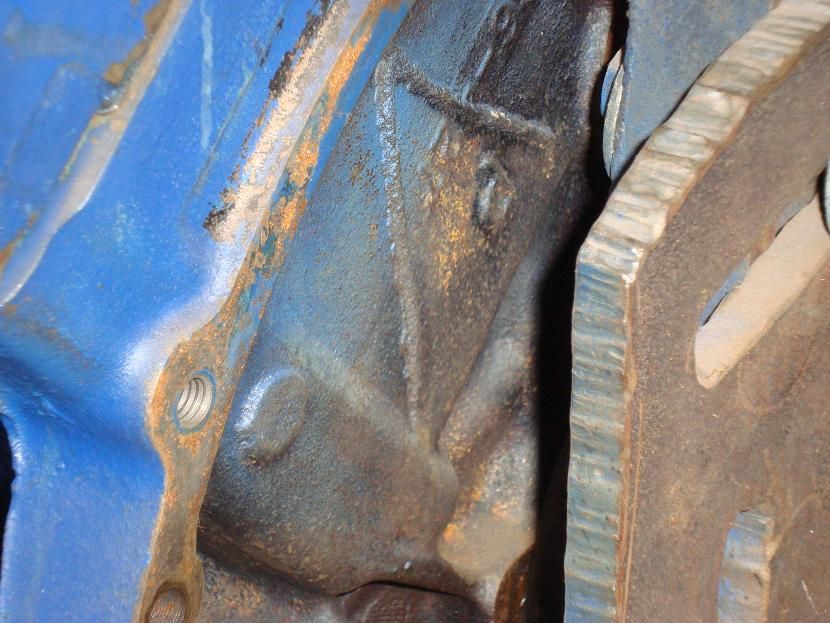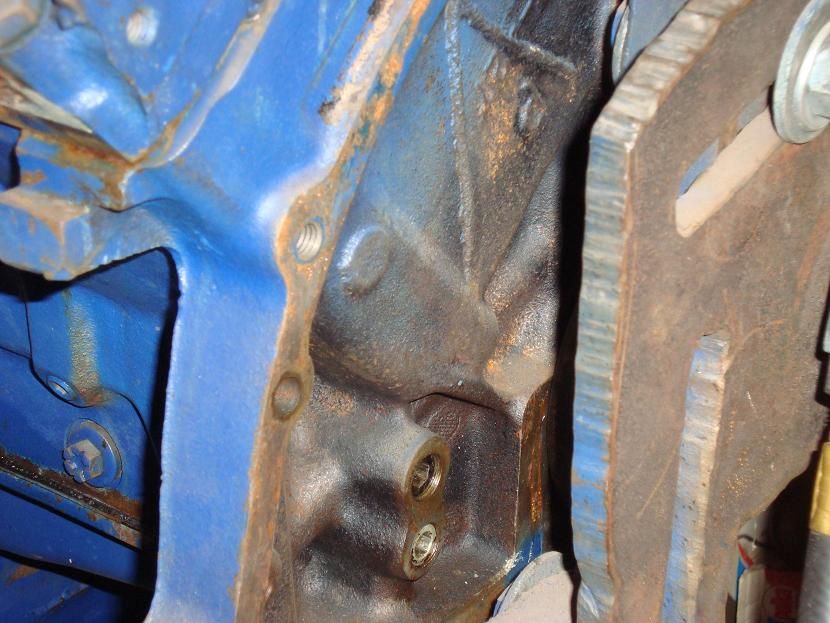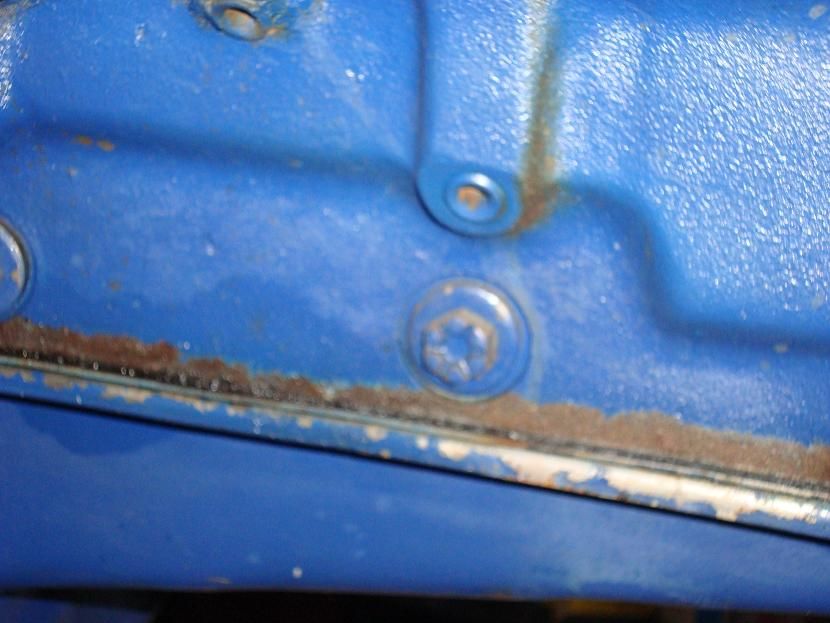Welcome to Fe's. Yes, it can be very hard to I.D a block. I'll add that not only do you normally need to know the bore and stroke but in some cases a sonic check to know for sure what you are looking at. Many side-oiler 427's and most 428's have a "scratch" mark on the back of the block. It looks like a weld bead and some people mistakenly call it that, but it is actually a scratch that was made in the casting sand of the mold. That is one of the ways Ford used to keep track of what they were making. Look at this picture and you can see a sideways "<" that goes through the 66-427. There are other marks that were used. 428's commonly have a "C" or "A" along with others.

In this next picture below the scratch you can see on the back of the block the side-oiler galley and relief passage have been drilled and plugged.

In this photo you can see the "hump" in the side of the block for the side-oiler passage an inch or so above the oil pan. There are 3 small threaded plugs there right above the cross bolts.

Marine 427's were made all 3 ways, as a center oiler, as a side oiler and as a block with an undrilled side-oiler passage. An undrilled side-oiler block would have to have that "hump" on the drivers side of the block.
I have also seen industrial blocks with very small bores that have the "66-427" on the back so do not go just by that.
Check the casting number on that head carefully. As was stated most likely it is a more common C6AE-J with an unclear 6 and not a C8AE-J, especially since the head on the other side is a C6AE. It only takes a few pieces of sand to fall off the mold to make a 6 look like an 8. Best way to I.D. that is to check the date code cast into the head in the valve spring area under the valve cover. If it starts with a 5 or 6 ( for the year cast ) it won't be a C8AE-J head. If it starts with an 7 or 8 you may be lucky. You may want to post a pictures for us. The value would really depend on condition - Is it cracked, sunken valve seats, etc.
I would also consider, looking at the half moon cut out on the crank flange, that it may be a 352 and the block wouldn't even be a good candidate to make a 390.